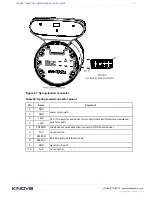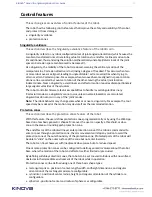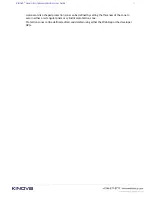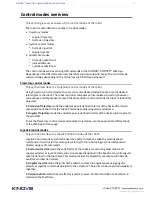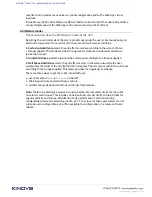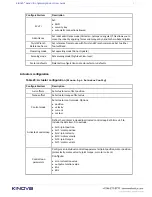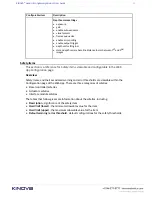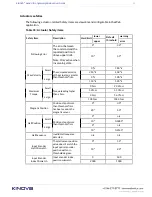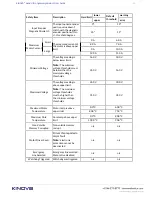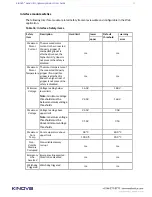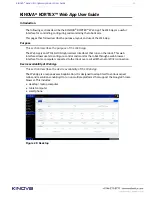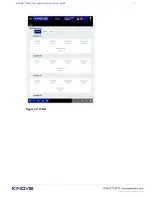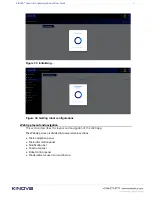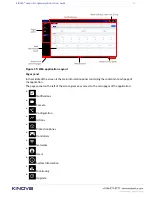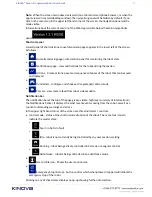
KINOVA
®
Gen3 Ultra lightweight robot
User Guide
79
Joystick control modes are used by any connected gamepad and by the
Web App
virtual
joysticks.
To enable Joystick Control Mode, use API methods or take control of the robot using either a
connected gamepad or the
Web App
control panel virtual joystick controls.
Admittance modes
This section describes the Admittance modes of the arm.
By setting the control mode of the arm to admittance mode, the user can manually apply an
external torque and/or force (wrench) to the arm and it will move accordingly.
In
Cartesian Admittance
mode, the end effector moves according to the wrench (Force
+ Torque) applied. This mode provides for singularity avoidance and obstacle avoidance
(protection zones).
In
Joint Admittance
mode the joints of the arm move according to the torques applied.
In
Null Space Admittance
mode, the end effector stays in the same pose while the user
manipulates the joints of the arm (within the null space). The arm moves within the null space
according to the torques applied. This mode provides for singularity avoidance.
There are three ways to put the robot into admittance:
• use the method
SetAdmittance
in the API.
• Web App control panel admittance controls
• admittance mode physical buttons on the interface module.
Note:
Motion in admittance mode
s
is
constrained by internal
safety
limits
for the robot
on velocity and torques
. This includes Cartesian linear velocity limits and joint limits for
angular velocity and torque.
Admittance mode performance is also tuned using
configurable parameters (damping, inertia, etc). Th
e values for these
parameters are not
currently user-configurable, but will be available
for configuration
in a future software
release.

